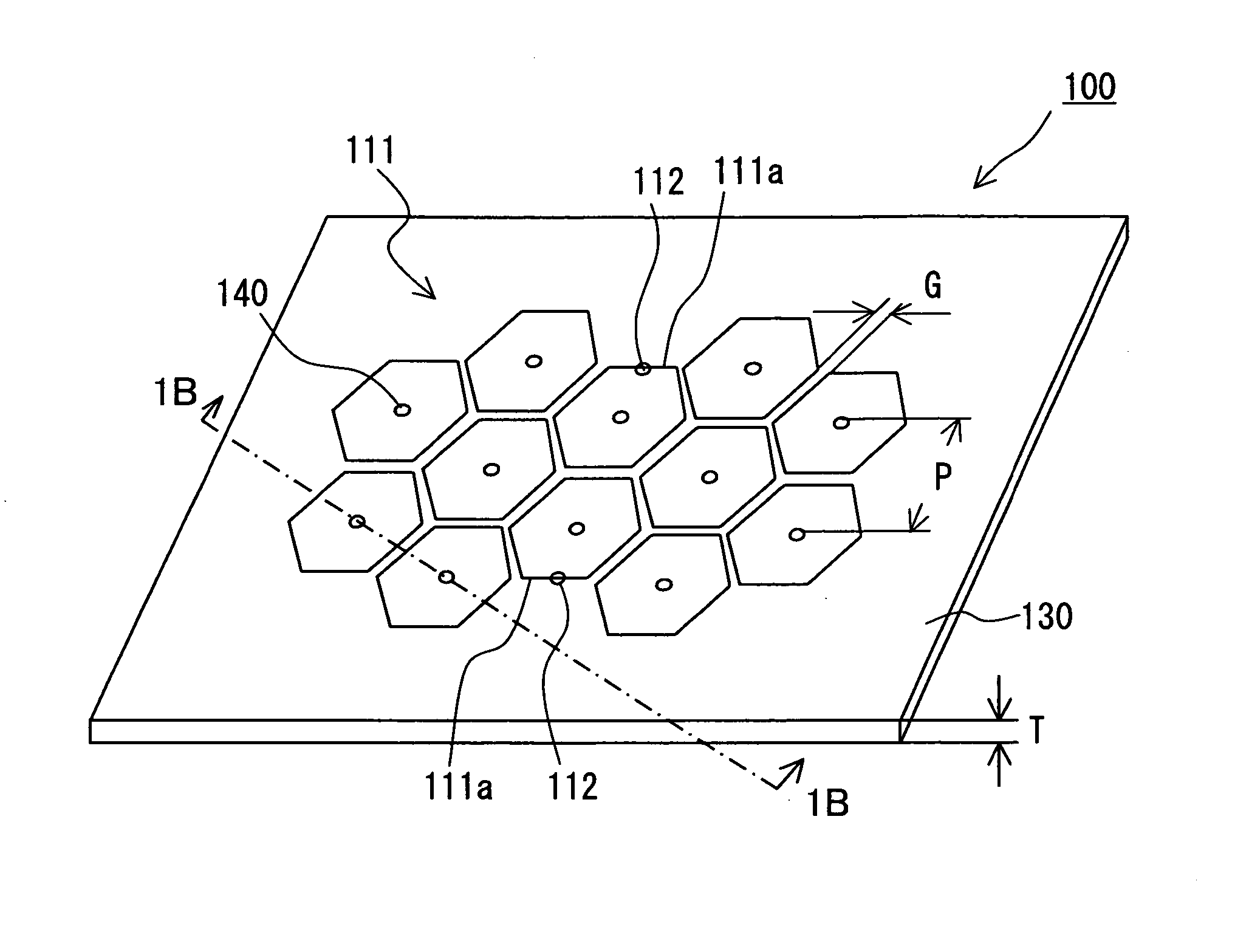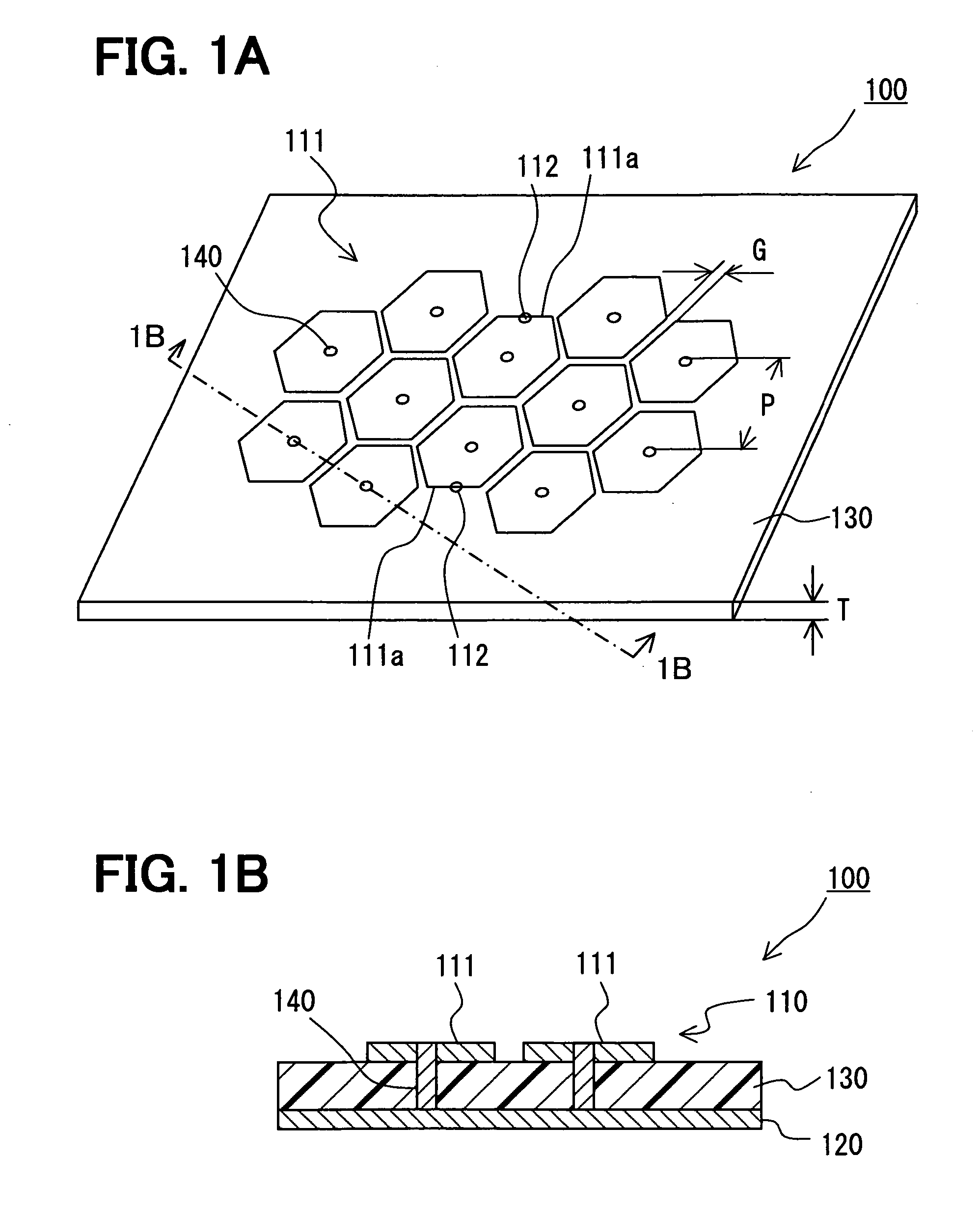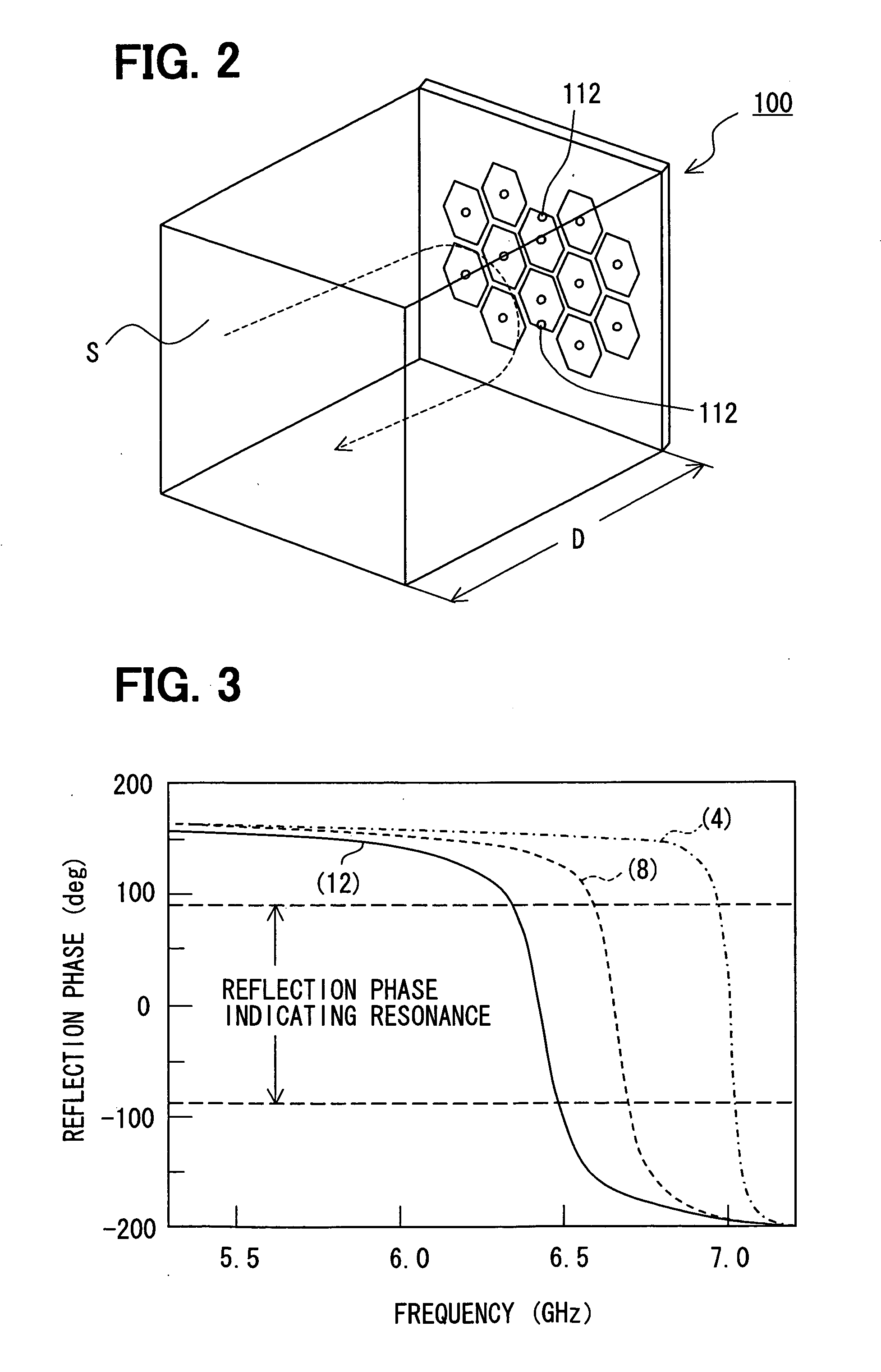Antenna, radio device, method of designing antenna, and nethod of measuring operating frequency of antenna
a radio device and antenna technology, applied in the direction of resonant antennas, radiating element structural forms, antennas, etc., can solve the problem of complex design that is required, and achieve the effect of easy design
- Summary
- Abstract
- Description
- Claims
- Application Information
AI Technical Summary
Benefits of technology
Problems solved by technology
Method used
Image
Examples
first embodiment
[0032] As shown in FIGS. 1A and 1B, an antenna 100 comprises plural elements 111 constituting a first conductive layer 110, a second conductive layer 120 disposed at a predetermined thickness T from the first conductive layer, a dielectric substrate 130 provided between the first conductive layer 110 and the second conductive layer 120, and conductive connecting members 140 for respectively electrically connecting the elements 111 and the second conductive layer 120.
[0033] The first conductive layer 110 has plural elements 111 made of conductive materials. The elements 111 are disposed adjacently to and separated from each other on a same plane of the dielectric substrate 130. The shape and size of the plural elements 111 are not limited as long as capacitors can be formed between adjacent elements 111. However, if all of the elements are substantially identical in shape and size, it becomes easy to design them. Efficient disposition of the elements 111 contributes to miniaturizati...
second embodiment
[0064] In this embodiment, the shape of the elements 111 in a plane direction is a square. In the case of a square, like the case of a regular hexagon, the elements 111 can be efficiently disposed. Moreover, manufacturing costs can be reduced because of easier manufacturing than the cases of other polygonal shapes.
[0065] As shown in FIG. 10A, in a construction in which the elements 111 are disposed so that the sides of the elements 111a each having the power feeding section 112 are opposed to each other, when the power feeding sections 112 are provided in the center of opposing sides, or in the center of opposite sides of opposing sides, the reflection coefficients of the power feeding sections 112 can be reduced. That is, preferably, the antenna 100 can be efficiently operated. As shown in FIG. 10B, in a construction in which the elements 111 are disposed so that vertexes of the elements 111a each having the power feeding section 112 are opposed to each other, when the power feedi...
third embodiment
[0067] In this embodiment, to connect to the outside, a microstrip line 150 is provided on a surface of the dielectric substrate 130 on which elements are formed, so that power is fed to the antenna 100 via the microstrip line 150. Specifically, in the antenna 100 in the first or second embodiment, the power feeding sections 112 are provided in the centers of opposite sides of opposing sides (or opposing vertexes) of two elements 111a, and the elements are disposed so that the sides or vertexes in which the power feeding sections 112 do not approach other elements 111. The microstrip lines 150 are respectively connected to the locations of the power feeding sections 112 and connected to the outside of the antenna 100 (dielectric substrate 130). Power is fed to the microstrip lines 150 so that phases of radio frequency signals are opposite to each other. That is, if the phase of one radio frequency signal is 0 degree, the phase of the other is 180 degrees. Such microstrip line 150 ca...
PUM
 Login to View More
Login to View More Abstract
Description
Claims
Application Information
 Login to View More
Login to View More - R&D
- Intellectual Property
- Life Sciences
- Materials
- Tech Scout
- Unparalleled Data Quality
- Higher Quality Content
- 60% Fewer Hallucinations
Browse by: Latest US Patents, China's latest patents, Technical Efficacy Thesaurus, Application Domain, Technology Topic, Popular Technical Reports.
© 2025 PatSnap. All rights reserved.Legal|Privacy policy|Modern Slavery Act Transparency Statement|Sitemap|About US| Contact US: help@patsnap.com



